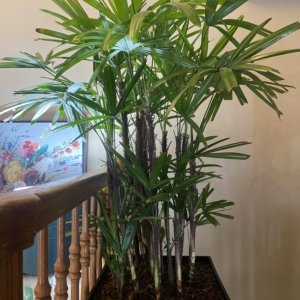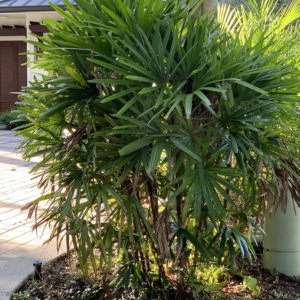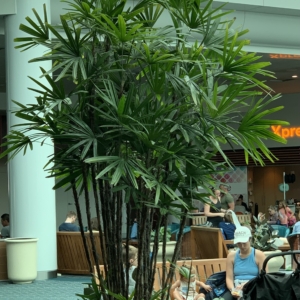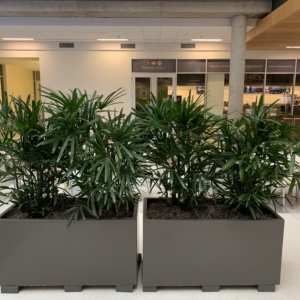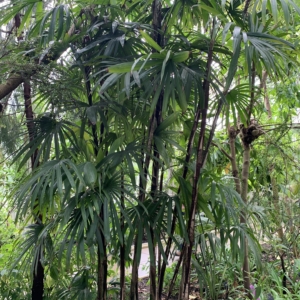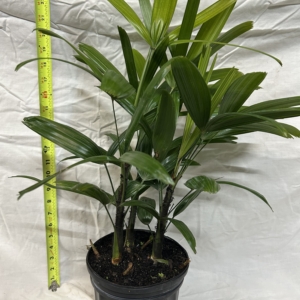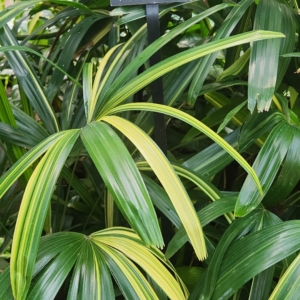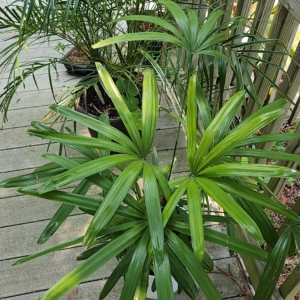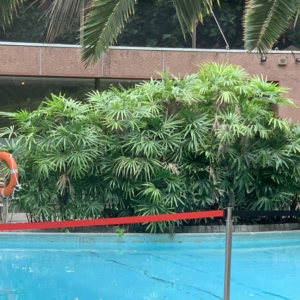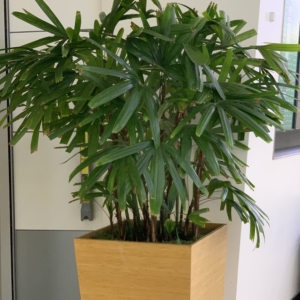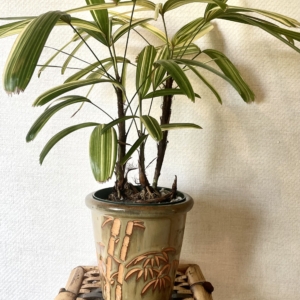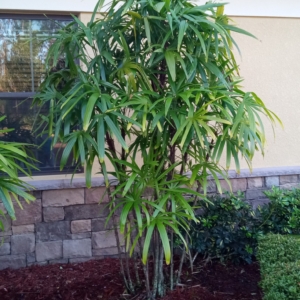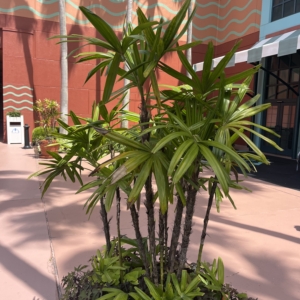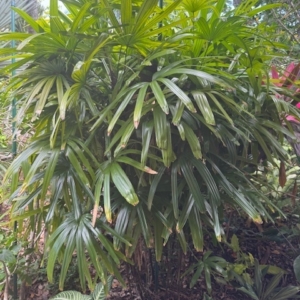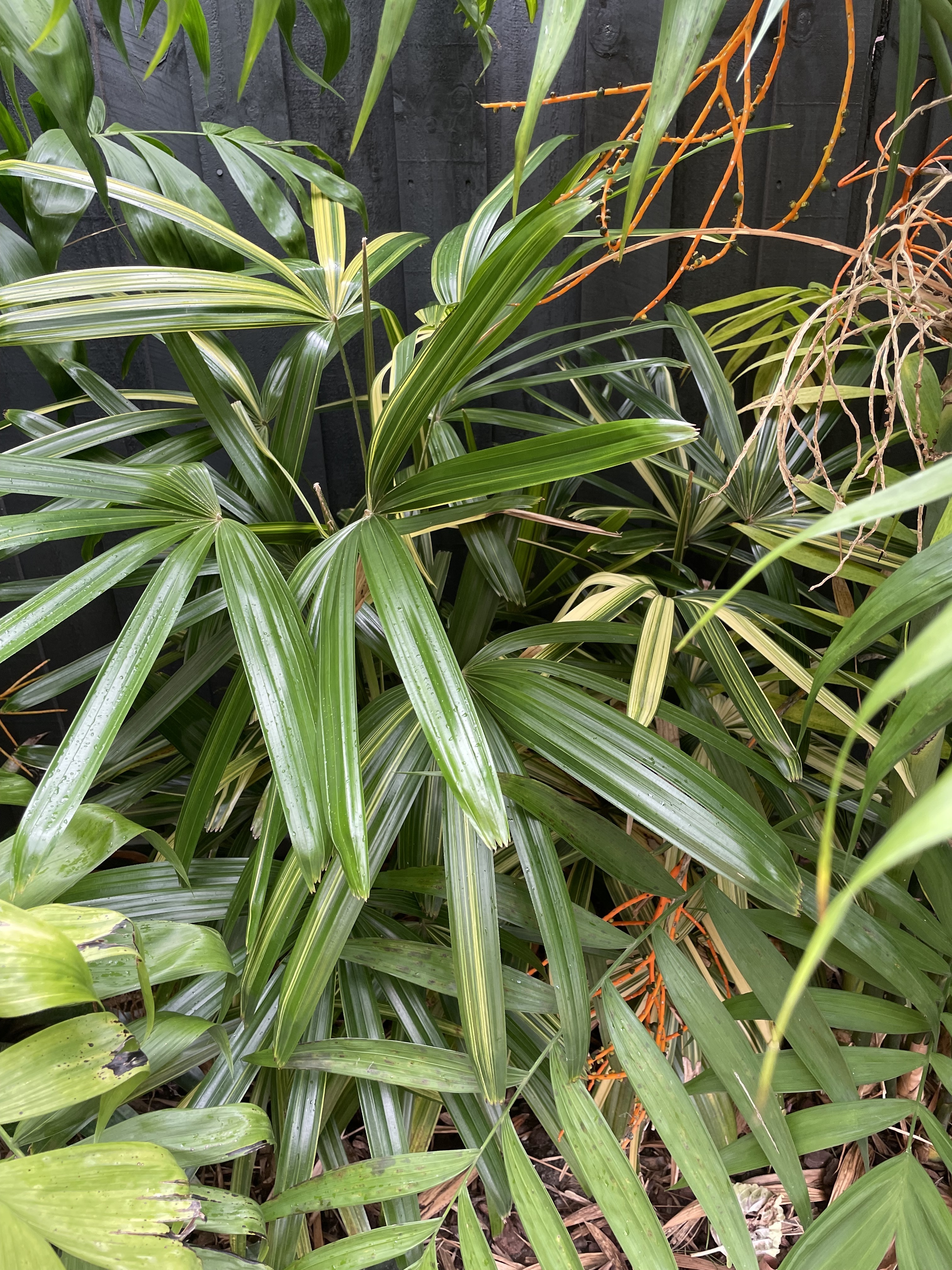Rhapis excelsa
Lady Palm
Country Of Origin
China
![O:31:"craft\elements\db\CategoryQuery":84:{s:27:"�yii\base\Component�_events";a:0:{}s:35:"�yii\base\Component�_eventWildcards";a:0:{}s:30:"�yii\base\Component�_behaviors";a:1:{s:12:"customFields";O:35:"craft\behaviors\CustomFieldBehavior":152:{s:5:"owner";r:1;s:34:"�yii\base\Behavior�_attachedEvents";a:0:{}s:10:"hasMethods";b:1;s:16:"canSetProperties";b:1;s:8:"address1";N;s:8:"address2";N;s:4:"city";N;s:5:"state";N;s:3:"zip";N;s:7:"country";N;s:11:"climateZone";N;s:6:"czZone";N;s:6:"czCity";N;s:10:"czProvince";N;s:9:"firstName";N;s:8:"lastName";N;s:5:"email";N;s:8:"password";N;s:12:"emailAddress";N;s:6:"photos";N;s:10:"photoSize1";N;s:14:"photoLocation1";N;s:14:"photoPlanting1";N;s:6:"photo3";N;s:6:"photo4";N;s:6:"photo5";N;s:14:"photoLocation2";N;s:14:"photoLocation3";N;s:14:"photoLocation4";N;s:14:"photoLocation5";N;s:10:"photoSize2";N;s:10:"photoSize3";N;s:10:"photoSize4";N;s:10:"photoSize5";N;s:14:"photoPlanting2";N;s:14:"photoPlanting3";N;s:14:"photoPlanting4";N;s:14:"photoPlanting5";N;s:10:"photoGroup";N;s:5:"photo";N;s:4:"size";N;s:8:"location";N;s:14:"typeOfPlanting";N;s:5:"agree";N;s:4:"body";N;s:10:"commonName";N;s:4:"zone";N;s:7:"minTemp";N;s:7:"zoneAlt";N;s:10:"growthRate";N;s:17:"lightRequirements";N;s:5:"habit";N;s:8:"heightFt";N;s:7:"heightM";N;s:9:"soilPhMin";N;s:9:"soilPhMax";N;s:8:"priority";N;s:5:"seeds";N;s:8:"seedling";N;s:8:"fourInch";N;s:9:"oneGallon";N;s:11:"threeGallon";N;s:13:"photoSpecies1";N;s:13:"photoSpecies2";N;s:13:"photoSpecies3";N;s:13:"photoSpecies4";N;s:13:"photoSpecies5";N;s:12:"abbreviation";N;s:15:"metaDescription";N;s:13:"metaPageTitle";N;s:11:"socialImage";N;s:19:"descriptionFallback";N;s:17:"globalSocialImage";N;s:13:"titleFallback";N;s:16:"pollAnswerMatrix";N;s:5:"label";N;s:12:"selectedPoll";N;s:5:"image";N;s:10:"recentPoll";N;s:10:"userPhotos";N;s:5:"sizeX";N;s:10:"imageTitle";N;s:21:"inPersonalCollectionX";N;s:9:"locationX";N;s:8:"speciesX";N;s:9:"photoDump";N;s:7:"species";N;s:19:"inPrivateCollection";N;s:15:"typeOfPlantingX";N;s:20:"formerScientificName";N;s:11:"headingList";N;s:4:"text";N;s:7:"heading";N;s:8:"careTips";N;s:8:"mapImage";N;s:13:"speciesPhotos";N;s:4:"user";N;s:20:"inPersonalCollection";N;s:11:"speciesPage";N;s:11:"assignments";N;s:16:"leafTypeDropdown";N;s:23:"countryOfOriginCategory";N;s:10:"linkTarget";N;s:11:"buttonLabel";N;s:12:"externalLink";N;s:12:"internalLink";N;s:9:"inHabitat";N;s:21:"skipPhotoFieldsDetail";N;s:20:"skipPhotoFieldsLabel";N;s:20:"recentSpeciesUpdates";N;s:14:"twitterProfile";N;s:16:"instagramProfile";N;s:15:"linkedinProfile";N;s:15:"facebookProfile";N;s:10:"crownshaft";N;s:14:"threadsProfile";N;s:16:"temperatureRange";N;s:9:"zoneTitle";N;s:15:"newsDescription";N;s:12:"newsImageUrl";N;s:8:"newsLink";N;s:10:"newsSource";N;s:28:"conservationScaleDescription";N;s:28:"conservationScaleStatusColor";N;s:17:"conservationScale";N;s:19:"userFacebookProfile";N;s:20:"userInstagramProfile";N;s:18:"userThreadsProfile";N;s:14:"imagePositionX";N;s:16:"shortDescription";N;s:11:"buttonTitle";N;s:14:"imagePositionY";N;s:6:"newTab";N;s:7:"linkUrl";N;s:10:"hideAuthor";N;s:11:"linkEntries";N;s:14:"authorOverride";N;s:8:"category";N;s:13:"contentBlocks";N;s:12:"callToAction";N;s:12:"calloutTitle";N;s:8:"embedUrl";N;s:6:"images";N;s:15:"singleImageSize";N;s:12:"shopCategory";N;s:14:"shopifyProduct";N;s:13:"speciesSelect";N;s:8:"products";N;s:14:"blueskyProfile";N;s:18:"userBlueskyProfile";N;s:7:"subject";N;s:55:"�craft\behaviors\CustomFieldBehavior�_customFieldValues";a:0:{}}}s:6:"select";a:1:{s:2:"**";s:2:"**";}s:12:"selectOption";N;s:8:"distinct";b:0;s:4:"from";N;s:7:"groupBy";N;s:4:"join";a:1:{i:0;a:3:{i:0;s:10:"INNER JOIN";i:1;a:1:{s:9:"relations";s:14:"{{%relations}}";}i:2;a:4:{i:0;s:3:"and";i:1;s:40:"[[relations.targetId]] = [[elements.id]]";i:2;a:2:{s:18:"relations.sourceId";i:386941;s:17:"relations.fieldId";i:150;}i:3;a:3:{i:0;s:2:"or";i:1;a:1:{s:22:"relations.sourceSiteId";N;}i:2;a:1:{s:22:"relations.sourceSiteId";i:1;}}}}}s:6:"having";N;s:5:"union";N;s:11:"withQueries";N;s:6:"params";a:0:{}s:18:"queryCacheDuration";N;s:20:"queryCacheDependency";N;s:5:"where";N;s:5:"limit";N;s:6:"offset";N;s:7:"orderBy";s:0:"";s:7:"indexBy";N;s:16:"emulateExecution";b:0;s:11:"elementType";s:23:"craft\elements\Category";s:5:"query";N;s:8:"subQuery";N;s:12:"contentTable";s:12:"{{%content}}";s:12:"customFields";N;s:9:"inReverse";b:0;s:7:"asArray";b:0;s:18:"ignorePlaceholders";b:0;s:6:"drafts";b:0;s:17:"provisionalDrafts";b:0;s:7:"draftId";N;s:7:"draftOf";N;s:12:"draftCreator";N;s:15:"savedDraftsOnly";b:0;s:9:"revisions";b:0;s:10:"revisionId";N;s:10:"revisionOf";N;s:15:"revisionCreator";N;s:2:"id";N;s:3:"uid";N;s:14:"siteSettingsId";N;s:10:"fixedOrder";b:0;s:6:"status";a:1:{i:0;s:7:"enabled";}s:8:"archived";b:0;s:7:"trashed";b:0;s:11:"dateCreated";N;s:11:"dateUpdated";N;s:6:"siteId";i:1;s:6:"unique";b:0;s:11:"preferSites";N;s:6:"leaves";b:0;s:9:"relatedTo";N;s:5:"title";N;s:4:"slug";N;s:3:"uri";N;s:6:"search";N;s:3:"ref";N;s:4:"with";N;s:16:"withCustomFields";b:1;s:13:"withStructure";b:1;s:11:"structureId";N;s:5:"level";N;s:14:"hasDescendants";N;s:10:"ancestorOf";N;s:12:"ancestorDist";N;s:12:"descendantOf";N;s:14:"descendantDist";N;s:9:"siblingOf";N;s:13:"prevSiblingOf";N;s:13:"nextSiblingOf";N;s:16:"positionedBefore";N;s:15:"positionedAfter";N;s:17:"�*�defaultOrderBy";a:2:{s:20:"elements.dateCreated";i:3;s:11:"elements.id";i:3;}s:53:"�craft\elements\db\ElementQuery�_placeholderCondition";N;s:51:"�craft\elements\db\ElementQuery�_placeholderSiteIds";N;s:39:"�craft\elements\db\ElementQuery�_result";N;s:47:"�craft\elements\db\ElementQuery�_resultCriteria";N;s:46:"�craft\elements\db\ElementQuery�_searchResults";N;s:42:"�craft\elements\db\ElementQuery�_cacheTags";N;s:42:"�craft\elements\db\ElementQuery�_columnMap";a:0:{}s:51:"�craft\elements\db\ElementQuery�_joinedElementTable";b:0;s:8:"editable";b:0;s:7:"groupId";i:11;} map image](https://projectpalm.net/assets/species/rhapis-excelsa/_600xAUTO_fit_center-center_100_none/map-of-China.png)
About Rhapis excelsa
This species forms a dense clump of slender, upright, bamboo-like canes with palmate, deep green deeply divided, fan-shaped leaves. A unique feature is the saw-toothed leaf-ends. Due to its ease of care and low light requirements, it has become a popular choice as an interior palm. This species produces a small inflorescence at the top of the plant with spirally-arranged, fleshy flowers containing three petals fused at the base. Ripe fruit are fleshy and white.
| Climate Zone | 9a |
| Min Temp (F/C) | 20 to 25 F / -7 to -4 C |
| Leaf Type | Costapalmate |
| Height | 13 Ft / 4 M |
| Growth Rate | Slow to Moderate |
| Conservation Status |
Not Evaluated
|
Cultivation Tips
This species is one of the easiest and most popular palms to grow indoors because it’s extremely tolerant of low-light conditions. It grows best in bright, indirect light to low-light environments. Avoid overwatering and allow the top half of the soil to dry out in between waterings. Feed every other month during the growing season with a balanced fertilizer
To Contribute To Project Palm!

